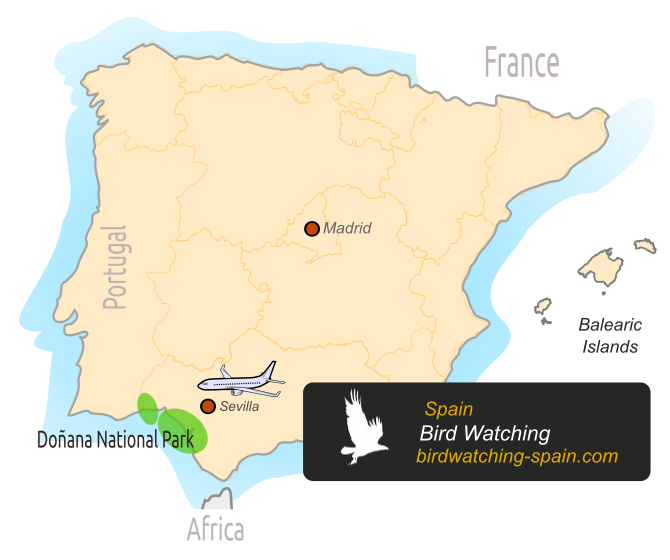Birdwatching at Donana National Park
Doñana National Park is a must-see place for birdwatching in Spain, where more than 500,000 bird species visit every year.

Doñana dunes near the sea. Photo by Daniel Lombraña González (CC BY-SA 2.0)
You’ll spot birds everywhere whether you’re an ornithologist or a birding enthusiast.
Before you pack your things and head to the National Park, check out these facts to know about Doñana.

Doñana National Park Facts
- A protected area cited as a UNESCO Heritage Site
- Lies in the Andalusia (south of Spain) at the right corner bank of Guadalquivir river
- A host for a vast array of fauna and flora biodiversity
- Home for the marshlands, mobile and fixed dunes
- The habitat for more than 500 threatened birds
- A wintering site to more than half a million of fowls

Doñana marshlands. Birds and horses. Photo by Jake Bellucci (CC BY-SA 2.0)
A Paradise for Bird Watching in Spain…
Doñana National Park lies in the Western portion of Europe and often a bottleneck that makes it a home to about six million passing birds.
It’s an important place where about 500,000 water birds and wintering ducks such as wigeon, teal, greylag goose, stone-curlew, purple gallinule, white stork, pochard, white-headed duck, and gull.
Doñana is also home to wetland species that include the crested coot and marbled teal.
In spring, the place becomes a habitat for African and Mediterranean bird species that include the spoonbill Platalea leucorodia while its lagoons become a feeding habitat for about 10,000 Phoenicopterus ruber (greater flamingo).
If you’re lucky, you may also spot the ibis, azure-winged magpie, red-necked nightjar, and buttontail.
You can also see species of black vultures, booted eagle, short-toed eagle, black kite, red kite, buzzard, hobby, black-shouldered kite.
Other Bird Species to Find…
- Adalbert’s eagle
- Black vulture
- White-headed duck
- Spanish imperial eagle
- Waders
- …
Doñana National Park Climate
Before you go birdwatching to the south of Spain, learn what to expect of the climate.
The place is ruled by the Mediterranean temperature. It has dry summers but cool and wet winter seasons.
The average temperature is about 17 degrees Celsius. Birders can expect a slightly hotter temperature in the months of July-August, when the annual mean temperature is about 23.5 while about 9.3 degrees Celsius in December-January.

Doñana marshlands, flamingos. Photo by Vince Smith (CC BY-SA 2.0)
So, when to come to Doñana for birding?
You can come all-year round but of course it may also depend on what species you would like to see.
For instance, you should visit it in the wet month of November if waterbirds such as geese and ducks are what you desire to see.
In spring, you can expect to see returning species like the North African spoonbills.
Trips, guides and related info
Be prepared with your telescopes, cameras, and a good memory to cherish this moment forever.
Spoon Trips
Tours to Doñana, Odiel Marshes, Sierra Morena and Tarifa. Walking and birdwatching.
More info at: spoontrips.com
Andalusian Cooperative Company Marismas del Rocío
Guided tours of about 70km, the most extensive and complete route of the Park.
More info at: donanavisitas.es
Spainbirds
Many birding tours along Spain
More info at: spainbirds.com
